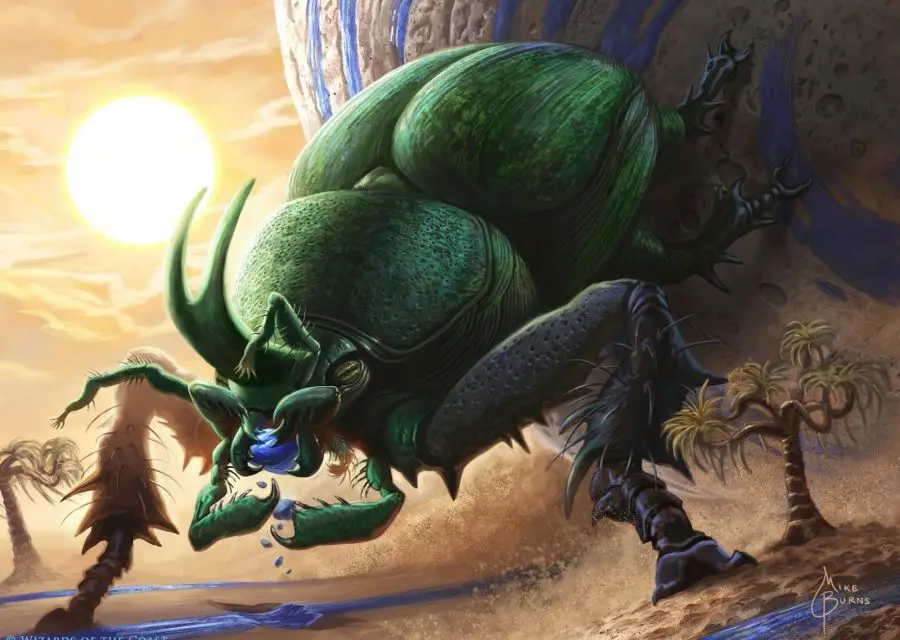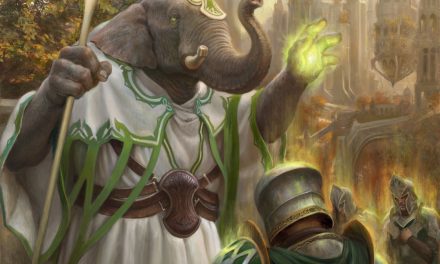Welcome, adventurers and spellcasters, to a deep dive into one of the most intriguing Druid-exclusive spells in the D&D 5e: Giant Insect.
Imagine you’re deep in a dense forest surrounded by hostile creatures. Your party is outnumbered, and the situation looks grim.
But wait! With a wave of your hand and a few arcane words, the humble insects around you transform into formidable allies, swarming your attackers and turning the tide of battle in your favor.
Sounds exciting, doesn’t it?
In this article, we’ll explore the ins and outs of the Giant Insect spell, from its basic mechanics to strategies for maximizing its potential. Whether you’re a seasoned Druid looking to add a new trick to your repertoire or a curious newbie eager to learn more, we’ve got you covered.
So grab your arcane focus, summon your inner entomologist, and let’s get ready to unleash the power of nature’s tiny titans!
What is Giant Insect 5e?
Giant Insect is a 4th-level transmutation spell that lets you transform everyday bugs into colossal combatants.
With a flick of your wrist and a few arcane words, you can turn up to ten centipedes, three spiders, five wasps, or one scorpion into their giant counterparts. These newly-empowered insects become your loyal allies, ready to follow your commands and wreak havoc on your enemies.
Whether you’re looking to web up foes with Giant Spiders or sting them with Giant Wasps, this spell offers a versatile and powerful addition to your magical toolkit.
LEVEL: 4th
CASTING TIME: 1 Action
RANGE/AREA: 30 ft
COMPONENTS: V, S
DURATION: 10 Minutes (Concentration)
SCHOOL: Transmutation
ATTACK/SAVE: None
DAMAGE/EFFECT: Summoning
SPELL LISTS: Druid
You transform up to ten centipedes, three spiders, five wasps, or one scorpion within range into giant versions of their natural forms for the duration. A centipede becomes a giant centipede, a spider becomes a giant spider, a wasp becomes a giant wasp, and a scorpion becomes a giant scorpion.
Each creature obeys your verbal commands, and in combat, they act on your turn each round. The GM has the statistics for these creatures and resolves their actions and movement.
A creature remains in its giant size for the duration, until it drops to 0 hit points, or until you use an action to dismiss the effect on it.
The GM might allow you to choose different targets. For example, if you transform a bee, its giant version might have the same statistics as a giant wasp.
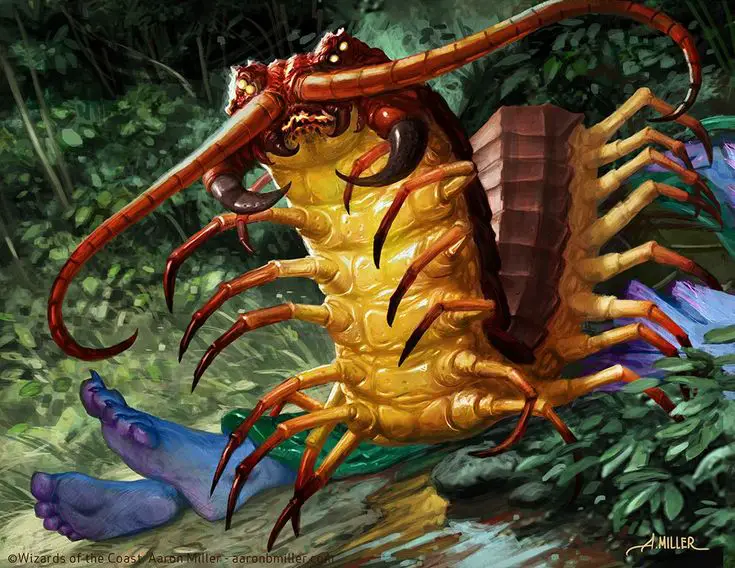
How to Use Giant Insect 5e Effectively
Harnessing the full potential of Giant Insect requires a bit of planning and strategy.
Here’s how you can make the most out of this powerful spell:
Combat Applications
- Strategic Deployment: Each type of giant insect brings unique strengths to the battlefield. Giant Spiders can ensnare enemies with their webs, creating choke points and controlling the flow of battle. Giant Wasps, with their ability to fly and deliver venomous stings, are perfect for harassing spellcasters and ranged attackers. Meanwhile, Giant Scorpions can dish out serious damage with their claws and stinger, making them ideal for taking down tough foes.
- Flanking and Ambushes: Use your giant insects to outmaneuver your enemies. Position Giant Centipedes to flank opponents, gaining the advantage and maximizing damage. Set up ambushes with Giant Spiders lurking in the shadows, ready to spring on unsuspecting targets. The element of surprise can turn a difficult encounter into a decisive victory.
Non-Combat Uses
- Exploration and Scouting: Send your giant insects ahead to scout dangerous terrain or explore hidden passages. Giant Wasps can fly over obstacles and report back on enemy positions, while Giant Centipedes can crawl through tight spaces to uncover hidden traps or treasures. Paired with the Speak With Animals spell, this spell is perfect for gathering intel without putting your party at risk.
- Utility and Problem-Solving: Need to cross a chasm? Giant Spiders can spin webs to create makeshift bridges. Facing a locked door? Giant Scorpions can use their crushing pincers to break it down. The versatility of Giant Insect extends far beyond combat, offering creative solutions to a variety of challenges.
By mastering these strategies, you’ll turn the Giant Insect spell into a formidable tool, capable of tipping the scales in your favor in both combat and exploration.
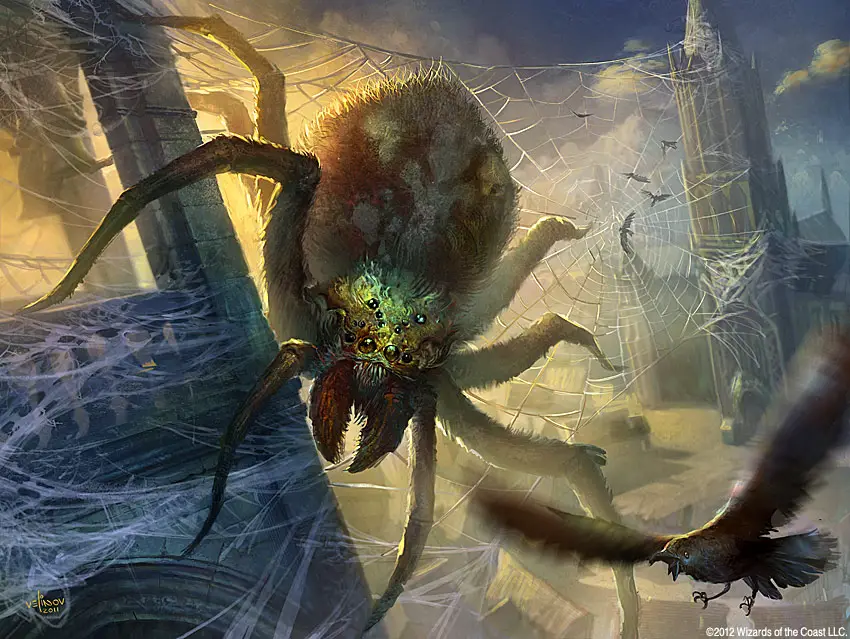
Pros and Cons of Giant Insect 5e
Like any powerful spell, Giant Insect comes with its own set of strengths and limitations. Let’s break them down so you can maximize its potential in your adventures.
Pros
- Versatility In Combat and Beyond: Giant Insect shines in its ability to adapt to various situations. Need to immobilize a pesky enemy? Giant Spiders can web them up. Facing airborne threats? Giant Wasps bring the sting. This spell’s flexibility makes it a valuable asset in any resourceful Druid’s arsenal.
- Strength in Numbers: Transforming multiple insects at once means you can overwhelm your foes with sheer numbers. A swarm of Giant Centipedes can quickly turn the tide of battle, while a single Giant Scorpion can deliver devastating blows.
- Creative Problem-Solving: Beyond combat, Giant Insect opens up a world of creative uses. Giant insects can scout ahead, carry out somewhat complex tasks, or even serve as mounts in a brief pinch. The possibilities are limited only by your imagination.
Cons
- Concentration Requirement: The spell demands your focus, meaning you can’t cast other concentration spells simultaneously. Losing concentration can abruptly end your insect army’s rampage, leaving you vulnerable.
- Limited Duration: With a duration of up to 10 minutes, you’ll need to act quickly to make the most of your giant allies. Time management becomes absolutely crucial here, especially in prolonged encounters.
- Insect Availability: No bugs around? No Giant Insect for you! The spell’s effectiveness hinges on the presence of the right kind of insects, which can be a limiting factor in certain environments.
Despite these drawbacks, Giant Insect remains a spell of immense potential, offering Druids a unique blend of power and versatility. Use it wisely, and you’ll find yourself turning even the smallest creatures into your greatest allies.
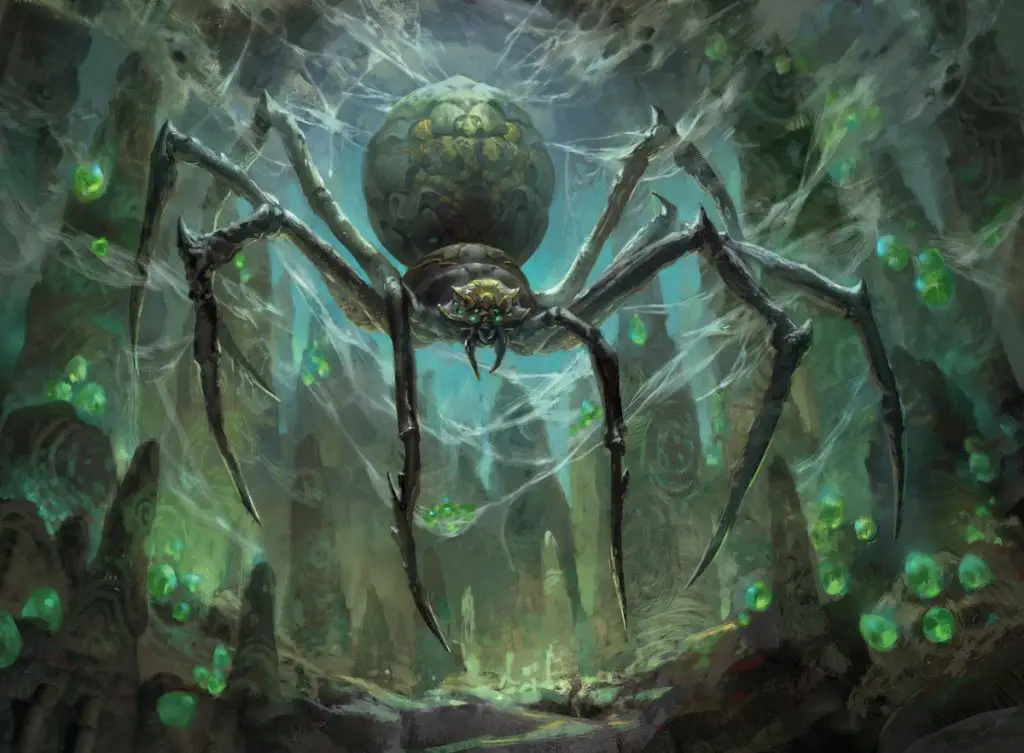
DND 2024 Changes
With the release of the 2024 Player’s Handbook, there were some changes made to the Giant Insect spell that are worth going over.
First, the spell’s range was increased from 30 feet to 60 feet.
However, the most important change was that now, instead of needing to see some nearby insects to cast the spell on, you just summon a giant insect of your choice (Centipede, Spider, or Wasp).
Your summoned giant insect has a dedicated stat block with certain extra features based on what insect you choose to summon when casting the spell. For example, the Giant Centipede variation can spit venom as a bonus action while the Giant Spider variation can use an action to shoot web at an enemy that deals damage and reduces that creature’s speed to zero.
When cast at higher levels, your summoned insect gains more armor class and hit points. Additionally, it deals more damage with its attacks based on the spell’s level.
This makes the Giant Insect spell generally more useful since you don’t need to have existing insects near you to cast it. Additionally, it’s a little easier to run in combat since you’ll only have the one insect to manage rather than a whole group.
However, these changes do also remove some of the tactical applications. If you’re using the 2024 version of the spell, you won’t be able to swarm foes like you could if you had ten Giant Centipedes or five Giant Wasps.
So it’s a bit easier to use with the 2024 rules and more consistent, but be prepared to lose a bit of the tactical potential that comes with unleashing a horde of plus-sized creepy-crawlies on your (absolutely terrified) enemies.
Let me know in the comments what you think of these changes!
Redesigned with a decade of community feedback, this essential guide is bigger and better than ever.
Create unforgettable characters with 12 core classes, 48 subclasses, and 10 distinctive species. Enjoy stunning new artwork and fresh gameplay features like Weapon Masteries and a revamped Tools and Crafting system.
Thoughtfully organized for ease of use, this 384-page book is your key to endless adventure. Get your copy now!
FAQs – Giant Insect 5e
No, the spell specifically allows you to transform certain types of insects: centipedes, spiders, wasps, and scorpions. Each of these insects has a designated giant counterpart that they transform into when the spell is cast.
Your DM might allow for some wiggle room though, so it’s worth asking them. (For example, they might let you make some giant ants using the Centipede statblock or some giant beetles if you’re looking for flying mounts in a pinch.)
If you lose concentration, the spell ends immediately, and all transformed insects revert to their normal size. This can be a critical vulnerability, especially in the heat of battle, so maintaining concentration is key!
Yes, you can issue any verbal commands to the giant insects, and they will follow them to the best of their abilities. However, keep your commands clear and straightforward to ensure they act effectively and efficiently.
Insects are certainly capable of working together in remarkably complex ways, but don’t expect your new Giant Spider friends to help you draft up battle plans. It’s up to you to coordinate them!
Yes, the spell’s effectiveness is dependent on the presence of the specific insects you can transform. If you’re in an environment where these insects are scarce or absent, the spell won’t be as useful. Always consider your surroundings before relying on Giant Insect as your go-to solution.
Conclusion – Giant Insect 5e
Whether you’re weaving webs of strategy in combat, scouting dangerous terrain, or solving puzzles with creative flair, this spell offers endless possibilities.
So the next time you find yourself in a tight spot, remember that even the tiniest creatures can become your greatest allies with a little bit of magic.
We’d love to hear your thoughts and experiences with the Giant Insect spell. Have you pulled off any legendary maneuvers or out-of-the-box strategies using this spell? Share your stories in the comments below!
And if you enjoyed this deep dive, why not join the Tabletop Joab community? Sign up for our newsletter to stay updated with the latest tips, tricks, and guides for all things D&D. Together, we’ll continue to explore the vast and magical world of tabletop gaming.

